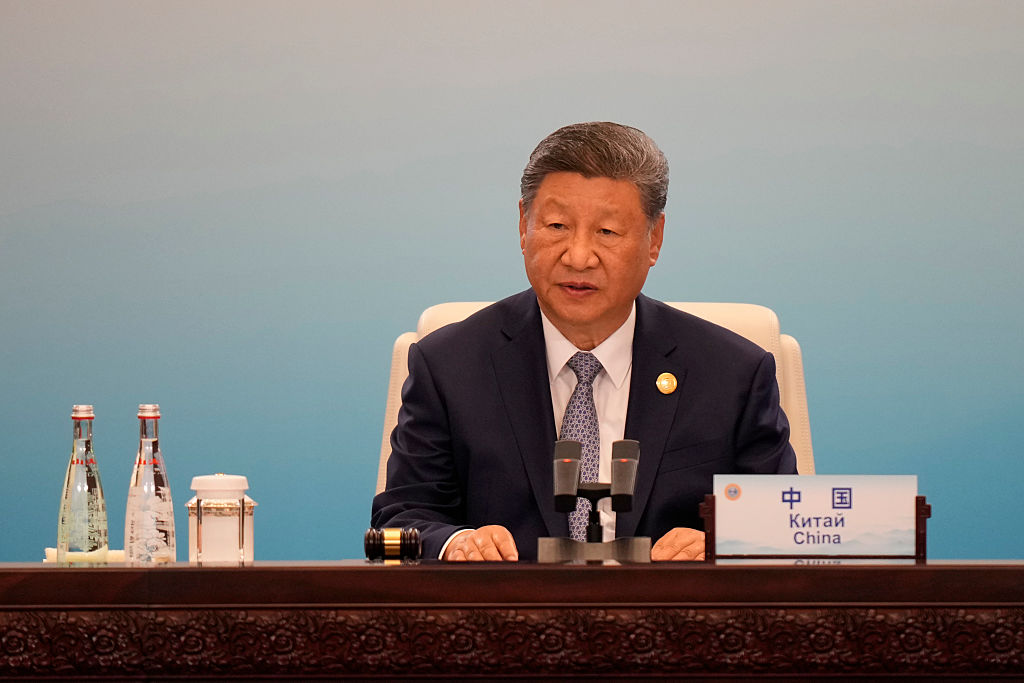Back in the 1960s, a senior Pentagon official would greet incoming recruits to his department with a cheery announcement: “Welcome to the world of strategic analysis, where we program weapons that don’t work to meet threats that don’t exist.” The recent media excitement over Chinese tests of a hypersonic nuclear weapon which, anonymous Pentagon officials told credulous reporters, overcomes even the “constraints of physics” shows that not much has changed.
Hypersonic missiles fly at five times or more the speed of sound. While ballistic missiles follow a fixed trajectory up into space and down again, so their course can be tracked soon after launch, hypersonics are designed to maneuver through the upper atmosphere, so that defenders cannot plot their course and thereby intercept them. The Chinese weapons test in the news is reportedly a “boost-glide” variant, launched to the fringes of space by a conventional rocket before being boosted on a high-speed glide to its target, maneuvering erratically through the upper atmosphere along the way.
The concept has a long, albeit uninspiring history, dating back to Germany in World War Two and imported to the US by a graduate of Hitler’s weapons program drafted to our Cold War defense effort. Dyna-Soar, a US hypersonic nuclear bomber project consumed a billion dollars in the 1950s and early 1960s (which was a lot of money in those days) but never left the drawing board.
The idea lived on in nooks and crannies of US defense budgets, before it received a powerful boost in 2018 from none other than Vladimir Putin. That year the Russian leader unveiled “Avangard,” a nuclear-armed hypersonic missile, boasting that it was “absolutely invulnerable to any air or missile defense system, [flying] to its target like a meteorite, like a ball of fire.”
In reality, this was a Soviet-era program, originally and aptly named “Albatross,” which — despite a history of test failure — was revived by Putin in an effort to show the world (especially his domestic audience) that Russia was still a superpower. Putin’s bombast had the predictable effect of spurring alarm in the US, with inevitable benefits for the defense industry.
The Chinese test this summer generated feverish commentary among military eminences. General Mark Milley, chairman of the Joint Chiefs of Staff, made headlines by comparing it to the traumatic “Sputnik moment” when the Soviet Union launched the world’s first satellite and snatched the lead in the space race. True to form, the Pentagon is now busy doling out rich contracts to favored corporations for a profitable assortment of hypersonic defense initiatives. One of these is a scheme to deploy dozens of satellites in low-Earth orbit tasked, in the excited words of one senior general, to “see everything, characterize everything, that goes on on this planet from a missile perspective, all the time, everywhere.”
However, in the likely event that Beijing’s scientists have not in fact evaded the laws of physics, there are sound reasons for believing that the Chinese weapon threatens nobody but the Chinese taxpayer. Because they are moving through the atmosphere, hypersonic vehicles maneuver by using control surfaces, just as ordinary aircraft bank, climb or descend using flaps and rudders. But in doing so they inevitably suffer more “drag” from friction with the air, especially as they are traveling at such high speed. Thus the more they maneuver, the more energy they lose, which is why they are unfeasible, and why the few US attempts at tests, even when the missile has successfully launched, have avoided course-changes that are the weapons’ essential feature.
More importantly, the alleged ability of Chinese — or anyone else’s — hypersonics to defeat a missile defense system, even if real, is entirely irrelevant, because no viable missile defense system currently exists, or is likely to appear any time soon. The US has spent some $200 billion on anti-ballistic missile defense programs since Ronald Reagan launched “star wars” in 1983, but with, in the words of Tom Christie, the Pentagon’s former director of Test and Evaluation, “very little to show for it.” This has of course not interrupted the money flow, such as, for example, an ongoing $17.7 billion program to develop and field a “Next Generation Interceptor” (NGI), destined to replace the failed $1.26 billion “Redesigned Kill Vehicle (RKV),” which in turn was supposed to replace the currently deployed but sadly deficient “Exo-Atmospheric Kill Vehicle (EKV).”
Despite the hail of acronyms and dollars, missile defense is never going to work, for the fundamental reason that an incoming missile can easily deploy decoys as cheap and simple as a child’s birthday balloon which are impossible to distinguish from an actual warhead. The number of decoys can always exceed the number of defending missiles. Such tests as the US has conducted against decoy-deploying missiles have been carefully designed to ensure the decoy is readily distinguishable from the warhead, necessary assistance that an actual attacker is unlikely to provide. “The inability of current systems to determine the difference between decoys and warheads,” says Ted Postol, professor emeritus of science, technology and national security policy at MIT, “is so complete that for all practical purposes it is not possible to intercept ballistic warheads.”
In other words, the weapon doesn’t work, and the threat doesn’t exist. The additional good news for those who tremble at the prospect of an armed and dangerous Middle Kingdom is that the Chinese military-industrial complex appears to be following the example of its American counterpart: pillaging the national treasury on the pretext of “defense” that is nothing of the sort.
This article was originally published in The Spectator’s UK magazine. Subscribe to the World edition here.

























